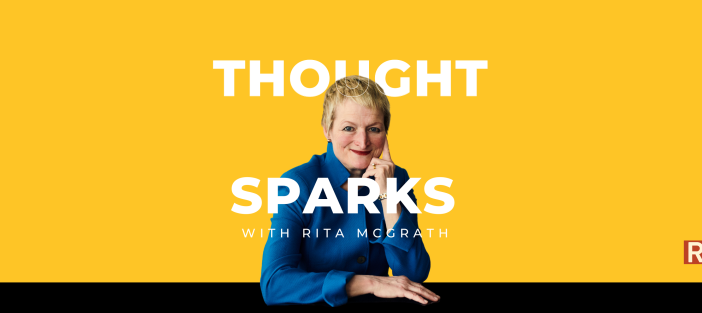
Publishing a book used to be a rite of passage for would-be pundits, experts, speakers and more. Books once provided credibility, presence in the market and an audience for new ideas. But in an age where everybody has a book, has thought leadership in the management area migrated elsewhere?

In Search of Excellence Has a Lot to Answer For
1982. That’s when Tom Peters and Robert H. Waterman’s manifesto, In Search of Excellence: Lessons from America’s Best Run Companies was published. It’s important to remember the reasons the book made such a splash. American companies were reeling from the first waves of globalization – sending many business models into free fall as global competition from countries like Japan began to dig into American companies’ market share. Articles with titles such as “Managing Our Way to Economic Decline” were in vogue. OPEC had discovered its power. The US spent the 70’s grappling with stagflation, interest rates were sky high and a general mood of pessimism about America’s perch on the global stage was widespread.
But this book! It made the case that many US companies had not only escaped this gloomy scenario but succeeded tremendously in so doing. Moreover, that the 8 attributes of excellent companies could be learned and applied anywhere. And that it wasn’t mysterious – there were things you could specifically do with the ideas – adopt a bias for action, for instance. Practice management by walking around. And more. There was a lot of subsequent carping about Peters and Waterman’s methodology. There was even the somewhat astonishing revelation from Peters himself that the data weren’t what they seemed. As he said in a 20-year retrospective, “This is pretty small beer, but for what it’s worth, okay, I confess: We faked the data.”
Whatever the merits of “Excellence,” one conclusion is absolutely inescapable – in a world hungry to understand changes that felt deeply unsettling, a booming market opened up for those who claimed to have answers. Before it was published, the very notion of a business best-seller, with the possible exception of books by Peter Drucker would have been laughable.
The guru business, in which lucrative speaking engagements, book deals, and consulting flowed from having a well-regarded, ideally best-selling book began at that point. Creating a best-seller was so valuable that when Michael Treacy and Fred Wiersema, at the time a couple of ambitious young consultants, published their book The Discipline of Market Leaders, they invested over $250,000 in buying over 10,000 copies of their own book. As a later Bloomberg investigation of the matter reported, “Treacy seems to have learned three valuable lessons: To ensure best-seller status, the massive book purchases had to be spread nationwide among the right bookstores; they had to be carefully spaced so as to not alert the Times’ computers; and the purchases could not be traced to the authors or the firm.” Job accomplished, the book successfully catapulted the two into the upper tiers of speaking, consulting and of course, more generous book deals.
You’ve got to have a book
5 or more figure speaking fees. Lots of pricing power on the advisory front. Getting access to fancy conferences. Being recognized as an authority. Being on TV. Getting moderately famous. All these things at one point were very much associated, for business authors anyway, with having a successful book. The lifestyle associated with all this came to be known as “thought leadership” in which authors shaped the conversation that others were having, became well known and were much sought after.
Best sellers still have the power to increase an author’s profile and put them on the map. But for just about everybody else, a book has become a great big business card. And that has created its own problems. Many business books (and I read a LOT of them) are a single idea, padded with anecdotes and examples. Others simply package already well understood ideas in dramatic language. Others are retellings of why some company or other was successful – those tend to have titles like “The [insert company name here] Way.
We’re now at a stage where having a book has gone from being a differentiator to having a book being simply expected for anyone to have a chance on the speaking-advising-guru circuit. Once that happens, the ideas in many books become commodities. With reportedly 12,000 business books being published each year, how likely is it that all of them contain world-changing ideas?
No more blurbs, no more paperbacks … early warnings of a business book inflection?
The book business itself is changing in interesting ways as readers consume content on other platforms and through other media. It could be a real shift in the thought leadership industrial complex.
Providing book “blurbs” is set to go the way of the dodo, at least if Simon & Schuster has anything to say about it. As humorist Christopher Buckley puts it, “The End of the Blurb. Thank God.” Sean Manning, in a “gripping” “stunning” essay explains why he will no longer require authors to beg blurbs from their circles of friends and acquaintances. As he puts it, “It takes a lot of time to produce great books, and trying to get blurbs is not a good use of anyone’s time. Instead, authors who are soliciting them could be writing their next book; agents could be trying to find new books; editors could be improving books through revisions; and the solicited authors could be reading books they actually want to read that will benefit their work—rather than reading books they feel they have to read as a courtesy to their editor, their agent, a writer friend or a former student. What’s worse, this kind of favor trading creates an incestuous and unmeritocratic literary ecosystem that often rewards connections over talent.”
We’ll see if the decision sticks across the industry – as someone who gets a lot of requests, it certainly would be a relief. But it signals something more to me, namely that the package of ideas represented by a book may well be getting replaced by other mechanisms for spreading thought leadership.
Publishers seem to be picking up this shift. The Wall Street Journal reported that the traditional publishing arc – a non-fiction author publishes a lovely new book that comes out in hardback and then 9 months or a year later the book gets a second chance at being noticed when the paperback version comes out. As they note, ““If retailers aren’t ordering the books at a high-enough volume to ensure some financial return, publishers won’t bother printing the paperbacks,” said?Dan Conaway, a senior literary agent with Writers House. For authors, it is a blow. “It’s profoundly demoralizing that a book that might have taken four years to write and was published with such promise is done after five months,” Conaway said.”
So what’s a thought leader to do?
If having an impact on the world and getting ideas out there is the measure of effective and authentic thought leadership, I think we are already living in the reality that it’s not just books. Thought leaders are increasingly creating short, timely, easily consumable nuggets of ideas that shape ongoing conversations.
Podcasts are huge. Author and marketing phenomenon Scott Galloway talks about “the podcast election” and suggests that podcasts, as opposed to traditional media, television or even books, are now pivotal. As he suggests, “New forms of media periodically reshape our culture and politics. FDR mastered radio, JFK leveraged TV, and Reagan nailed cable news. Obama energized young voters via the internet. Trump hijacked the world’s attention on Twitter. This year it was podcasting. The three biggest media events of this fall were the debate and Harris and Trump’s respective appearances on?Call Her Daddy?and?The Joe Rogan Experience.” Adam Grant, who has had several best-selling books, also has a podcast that has been downloaded 85 million times – I would venture to say an order of magnitude greater than the sales of books.
I also find that many people like audio formats – either books on audio or podcasts on different topics. And when you consider that Joe Rogan has 17.3 million subscribers to his podcast on YouTube alone, the numbers are staggering.
Video has also become a mainstream vehicle for communicating ideas. This can take the form of filmed TED style talks, highly produced videos and many other ways in which video shows up on platforms like YouTube, Instagram and of course TikTok (for a great send-up of the thought leadership racket have a look at this video).
Then of course we have social media which proclaims to offer news and other vital information. Over half of U.S. adults say they get at least some of their news from social media, according to Pew Research. Social reach is measured by followers, reposts, uptakes and all sorts of digital interactions to the point at which a friend said, “everybody has two jobs now – one is doing the job, and the other is relentlessly promoting it.” Regular newsletters, some even that have massive paid subscriptions, have become widely adopted.
Are books no longer the gold standard?
As someone who has been trying to wrestle a book to the ground for longer than I care to think about, I certainly hope not. But as a living mechanism for influencing ideas, books have their limitations. Had I written the one I’m working on (on permissionless organizations) on my original schedule, it would have been obsolete before it ever appeared between two covers.
Books are delightful for longer explorations of phenomena than can be managed in a short blog post. They are great for forcing you to slow down and take some time and energy on something. And sometimes they really do change the world – Jonathan Haidt’s wonderful book about the effect of cell phones on young people, The Anxious Generation is a case in point.
In a fragmented, attention-scarce context, books are likely to remain an important vehicle for communicating ideas. But the undisputed conveyor of guru status? More of a question.
